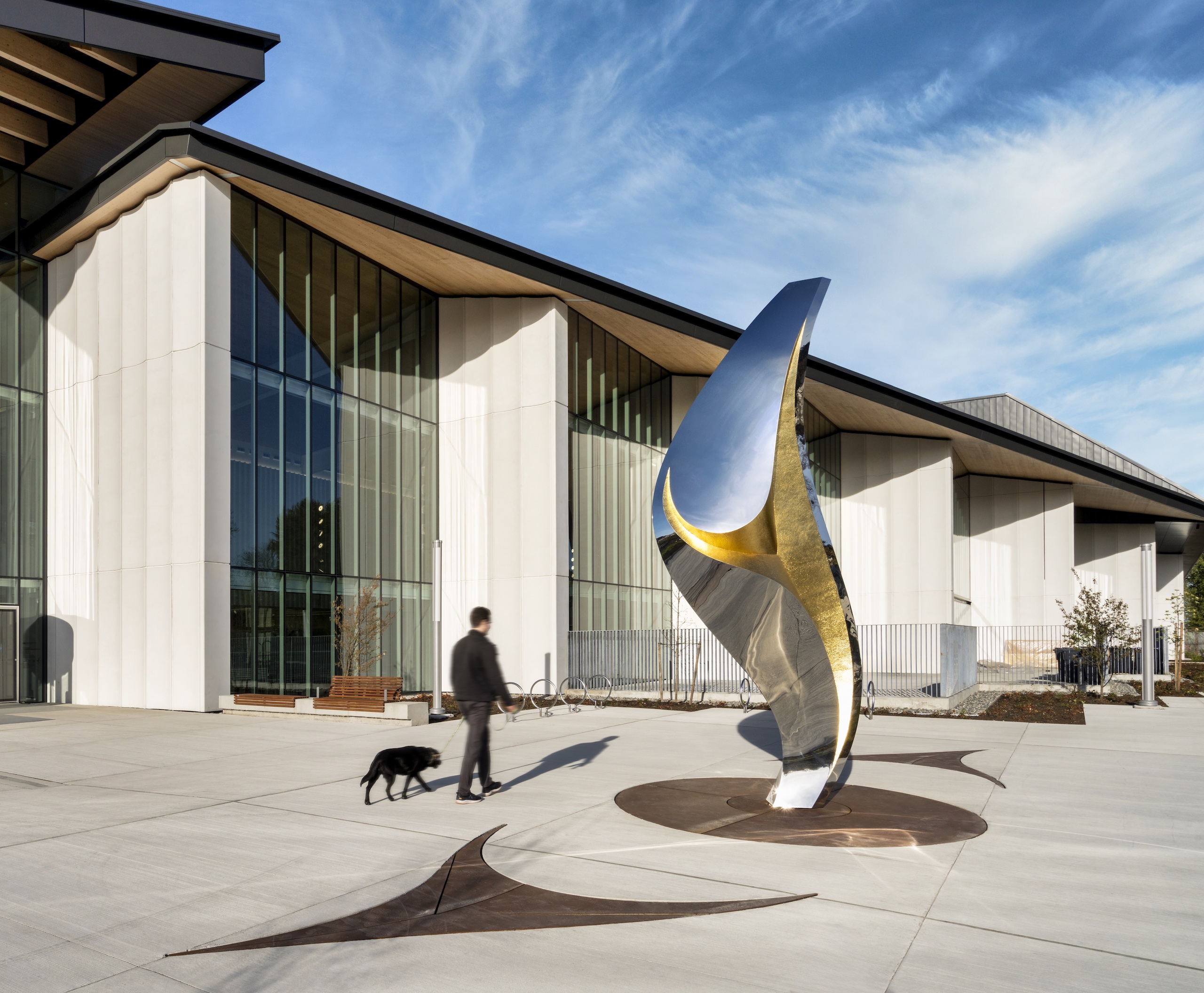
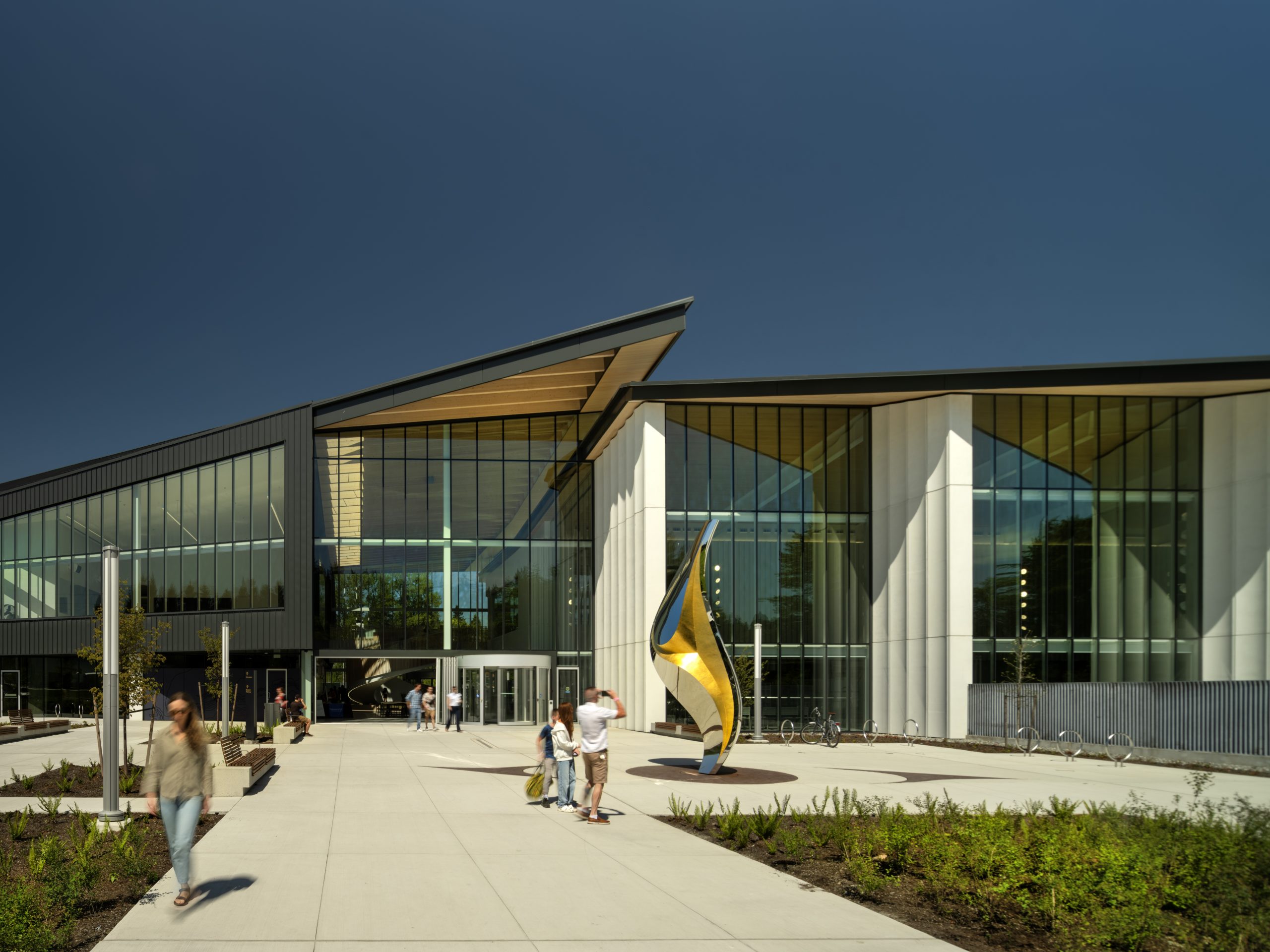
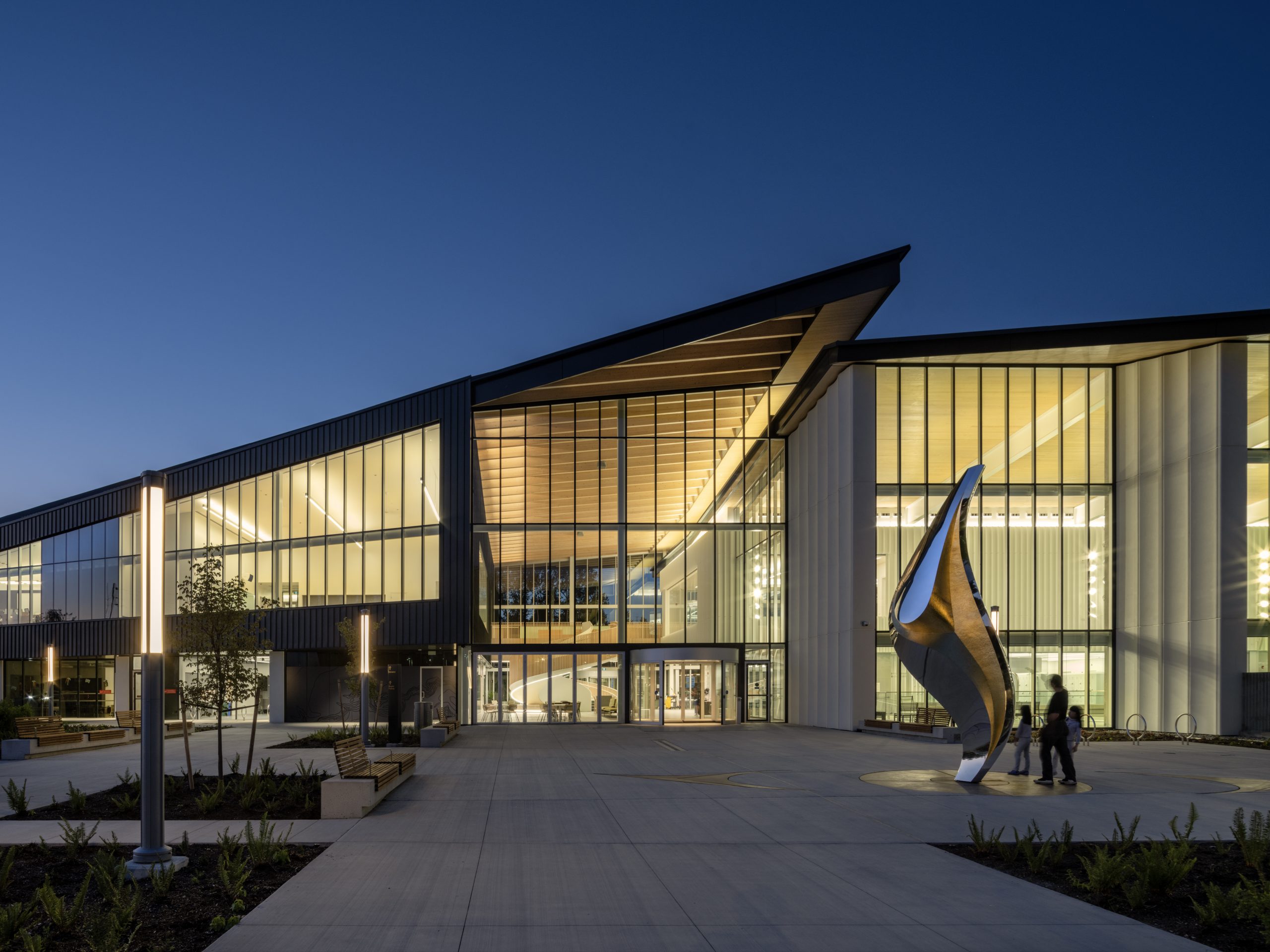
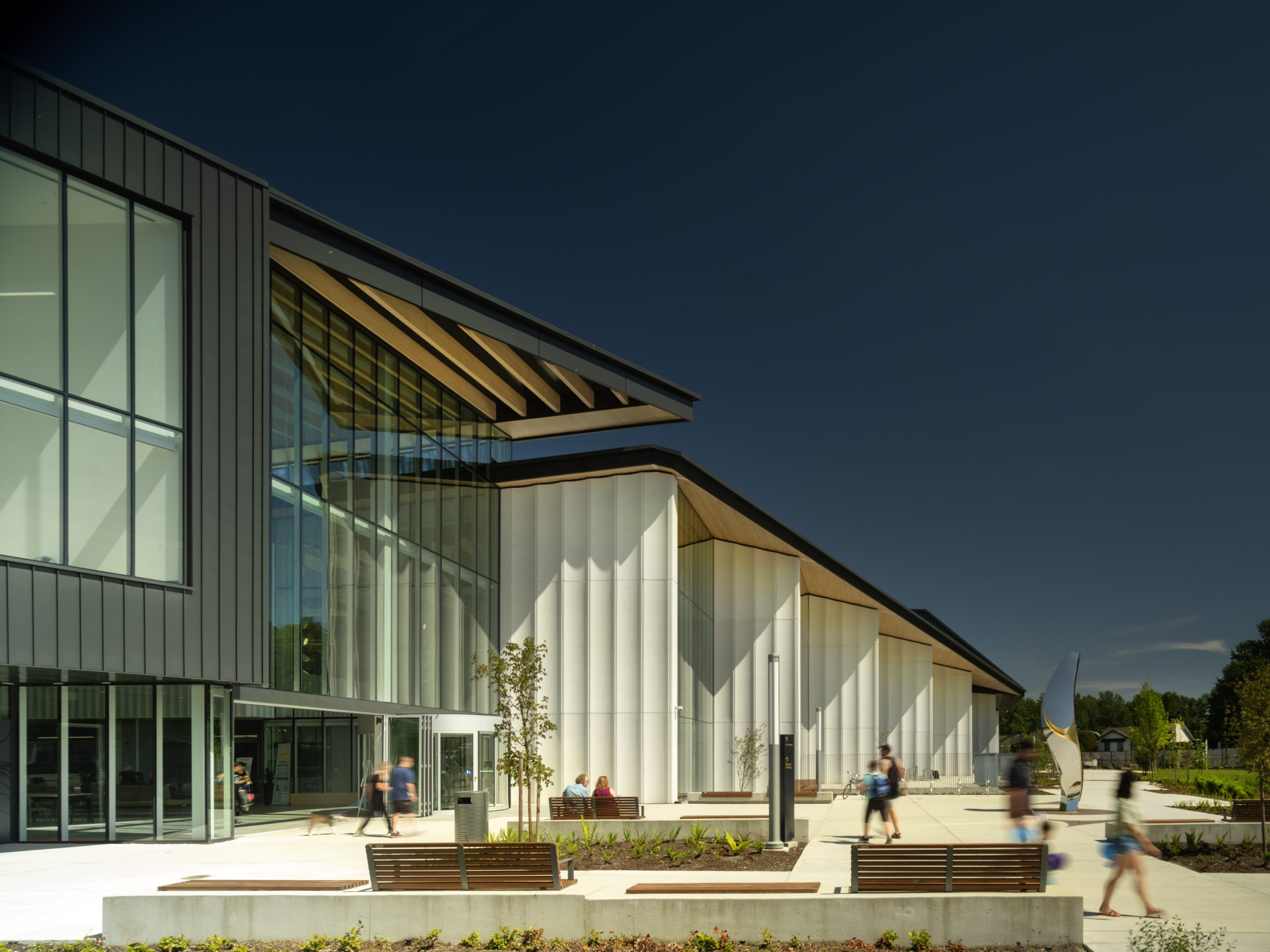
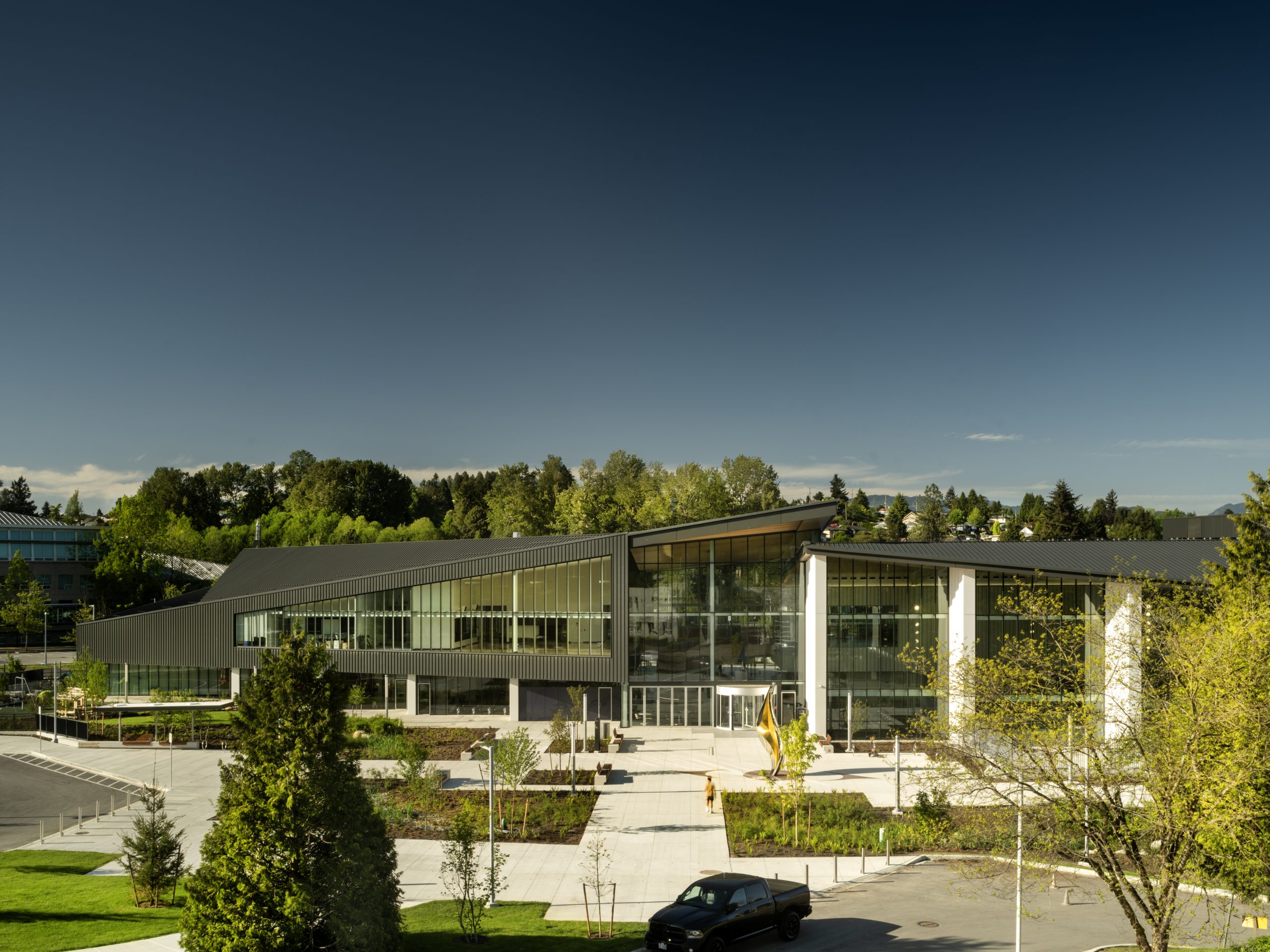
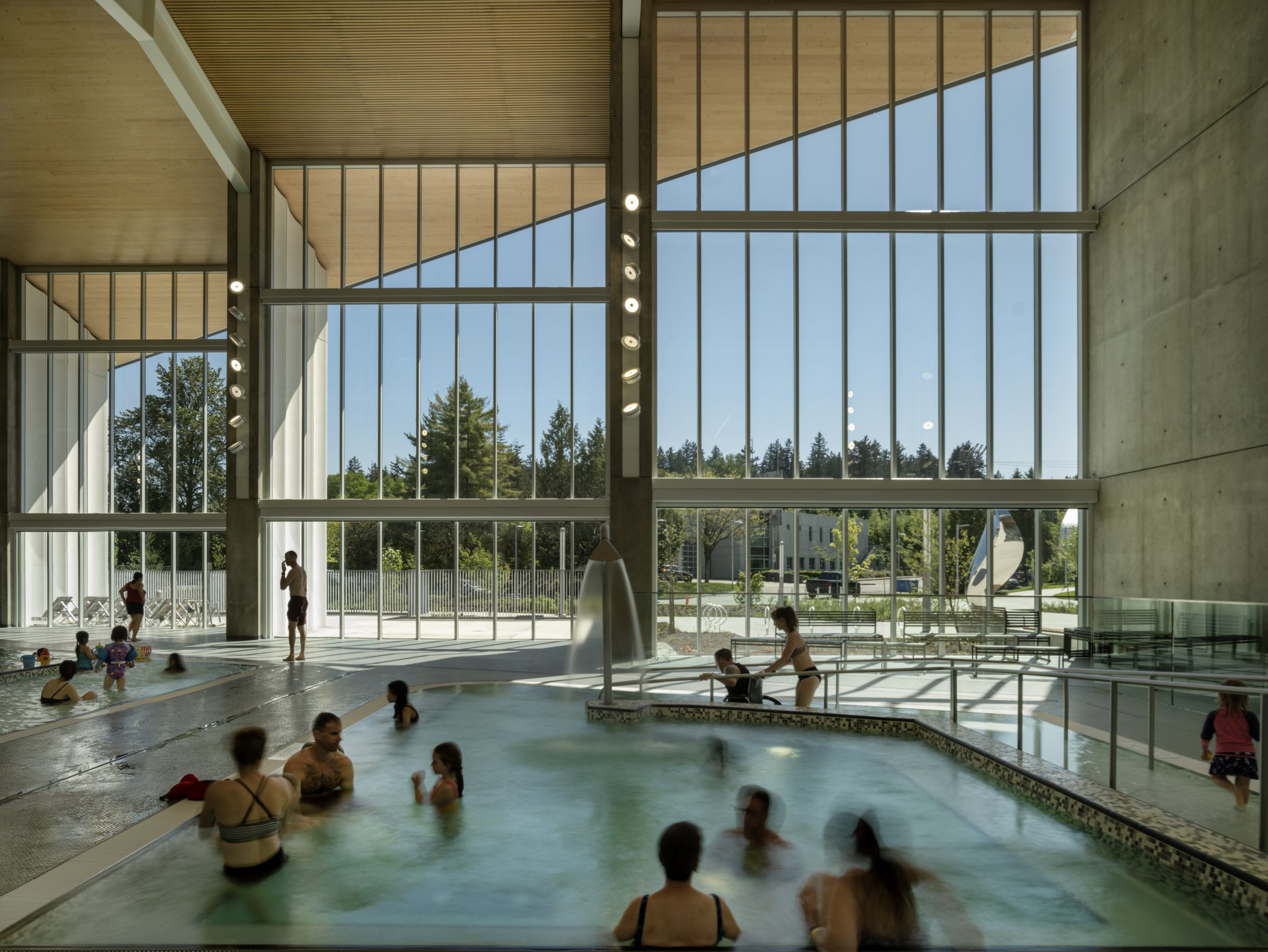
Client: City of New Westminster
Location: New Westminster, BC, Canada
Completion date: 2024
Artwork budget: $369,995
Project Team
Artist
James Harry
Fabricator
Sino Sculpture
Fabricator
Area 58 Innovations
Installation
Pheonix Truck and Crane
Public & Community Art Coordinator
Quyen Hoang
City of New Westminster
Architect
Alexandra Kenyon
Architect təməsew̓txʷ Aquatic and Community Centre
Overview
Miyíw̓ts is a 16ft mirror-polished stainless steel sculpture standing at the South Plaza entrance of təməsew̓txʷ Aquatic and Community Centre in the City of New Westminster, BC, Canada. Meaning “Water’s Edge”, Miyíw̓ts reflects the strength and power of the site’s former Glenbrook Ravine, while referencing Coast Salish design motifs and presence on these lands. Gold leaf has been intricately applied to the inner recessions bringing warmth, depth and movement to the work. The sculpture rests on top of a Cor-ten steel inlay designed in the shape of the Coast Salish eye.
Commissioned by the City of New Westminster, Miyíw̓ts and təməsew̓txʷ “Sea Otter House”, designed by hcma architecture+design, are together playing an important role in shaping a vision for the future of the city. Situated on the edge of a residential neighbourhood north of the Fraser River, this area has been a cultural and economic life-source for Indigenous peoples for thousands of years. It is also the location of the former headwaters of Glenbrook Ravine, which were lost to development over the preceding decades. Both projects take a strong stance toward reconciliation with the natural character of the landscape.
Goals
The goal is for people to sit with Miyíw̓ts and see themselves reflected in it. This permanent public art piece affirms the vitality and presence of the Coast Salish on these lands. As the City of New Westminster’s largest public art installation, Miyíw̓ts will hopefully serve to help future generations of Indigenous children and adults to feel proud of who they are and feel visible on their land.
Standing beside təməsew̓txʷ, which is New Wesminsters largest capital project to date, both projects embody the City’s vision around environmental performance, inclusive and accessible design. They both aim to demonstrate its commitment to progress Truth & Reconciliation. The story of Miyíw̓ts and təməsew̓txʷ is one that explores what it means to create through a lens of social and environmental impact, and how considering reconciliation with the land and the impact on future generations can shape work.
Process
1. Concept + Design: The process begins with an idea or vision. Artists often sketch their concepts and create a small wood carving model, known as a maquette, to visualize the final piece.
2. Scaling Up: Once the maquette is approved, it is scaled up to the desired size. This involves creating a larger model, often using materials like plaster or fiberglass.
3. Mold Creation: The enlarged model is used to create a hard mold. This mold serves as a reference for shaping the stainless steel.
Forging the Sculpture: Sheets of stainless steel are cut, hammered, and welded to match the contours of the mold. This step requires precision and skill, as stainless steel is a challenging material to work with.
4. Polishing: After the sculpture is formed, it undergoes extensive polishing to achieve a smooth, reflective surface. This step enhances the sculpture’s aesthetic appeal.
5. Finishing Touches: Finally, any additional details are added, and the sculpture may be coated with protective layers, such as fluorocarbon paint, to ensure durability.